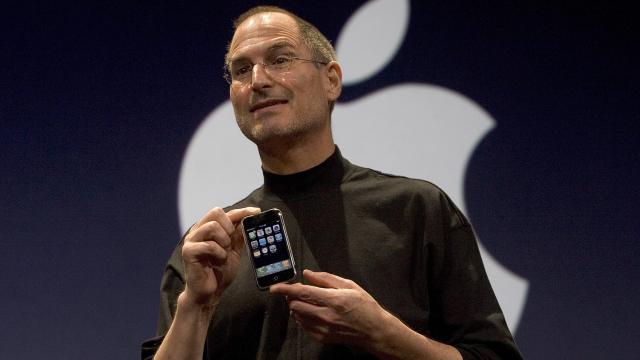Saturday is the second anniversary of Steve Jobs’s death, and a lot of remembrances are making their way around the web. One of the most revealing comes from the New York Times Magazine who just published a sprawling report on the original iPhone. Long story short, that thing was a mess.
If you go back and look at Jobs’s original presentation at Macworld in 2007 will give you chills. “Every once in a while a revolutionary product comes along that changes everything,” the Apple founder says to open his presentation. What follows was a mind-bendingly awesome display of cutting edge technology it probably made your eyes melt.
But the thing is, the technology was so cutting edge, it wasn’t ready. In fact, it was super duper buggy. Fred Vogelstein reports in the Times Magazine:
The iPhone could play a section of a song or a video, but it couldn’t play an entire clip reliably without crashing. It worked fine if you sent an e-mail and then surfed the Web. If you did those things in reverse, however, it might not. Hours of trial and error had helped the iPhone team develop what engineers called “the golden path,” a specific set of tasks, performed in a specific way and order, that made the phone look as if it worked.
Oh, and let’s not forget that this thing was supposed to connect to internet in a room filled with 3000 nerds also connected to the internet. Apple had to call in a favour:
They had AT&T, the iPhone’s wireless carrier, bring in a portable cell tower, so they knew reception would be strong. Then, with Jobs’s approval, they preprogrammed the phone’s display to always show five bars of signal strength regardless of its true strength.
Even with all the crazy preparation and the special cell tower and a custom-built electronics lab backstage, the bugs persisted. Evidently, in 100 or so rehearsals, Jobs didn’t make it through once without a glitch. The only solution? More iPhones:
None of these kludges fixed the iPhone’s biggest problem: it often ran out of memory and had to be restarted if made to do more than a handful of tasks at a time. Jobs had a number of demo units onstage with him to manage this problem. If memory ran low on one, he would switch to another while the first was restarted. But given how many demos Jobs planned, Grignon worried that there were far too many potential points of failure.
The rest of Vogelstein’s story is terrific, and you should go read it. For now, though, know that those pivotal 15 minutes of Steve Jobs on stage back in 2007 didn’t just seem like a miracle. It was a miracle, technically speaking. [NYTM]
